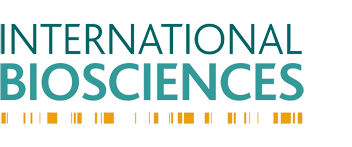Diagnostic Vs Screening Tests for Down Syndrome
Down Syndrome is the most common chromosomal disorder. 1 in every 700 babies are born with the disorder, at least to some extent. Because it is such a common medical condition it is crucial that you understand what exactly Down Syndrome is, how you can prepare for it, and what your options are if you are still pregnant.
First of all, it is important to know the cause of Down Syndrome. In the average human cell there are 46 chromosomes split from each parent. This syndrome occurs if there is a defect in chromosome 21. The chromosome will duplicate either partially, or completely. That extra chromosome is what causes the disorder, and obviously testing is important for expecting parents so they can be prepared for their child to be born. There are two core types of tests, each has a specific function.
Screening Tests
Screening tests are performed on the expecting mother to see if there is a chance of the unborn child having Down Syndrome. There are a variety of different screening methods, the most common is the ultrasound. However, there is also non-invasive prenatal testing for Down syndrome (NIPT) which involves a blood sample being taken from the expecting mother. This particular type of screening test is preferred for a number of reasons.
- This test is known to be more accurate than other types of screening tests. (99% accuracy on whether or not the child has Down Syndrome)
- Blood can be drawn from the expecting mother after just 10 weeks of pregnancy.
- Screening tests, generally speaking, are less invasive than the other diagnostic tests out there.
Two other types of screening tests include ultrasounds and maternal serum testing. Ultrasound testing involves the doctors doing an ultrasound to look for any noticeable physical abnormalities. Maternal serum testing can also be performed. In this screening test physicians look closely at the mother’s alpha-fetoprotein. Levels of the protein can be measured to detect certain congenital defects such as spina bifida and Down’s syndrome.
It is important to note that people have the preference over whether or not they want a diagnostic or screening test. However, a screening test is recommended first. If something comes back as abnormal on the screening test more invasive diagnostic tests will be necessary.
Diagnostic Tests
If you find yourself in a position where diagnostic testing is something that has to be done you should be aware of the options that are out there for you and your child. Here are three of the most common diagnostic tests that physicians use.
First there is Amniocentesis, which involves the doctor taking a sample of the fluid around the fetus. This fluid will contain the fetal tissue with cells that can be examined. The physicians examine the sample and see if the extra chromosome is present. This form of testing is normally done after the 15th week of pregnancy.
Next, there is Chorionic Villus Sampling, or CVS. This testing is performed by going in and taking cells directly from the placenta. This test can be done after the 10th week of pregnancy, during the first trimester.
Diagnostic testing is something that should be done if you receive positive results from the screening tests. You should always keep in mind that diagnostic tests almost always run the risk of miscarriage. Screening tests tend to be safe and reliable but only indicative.

